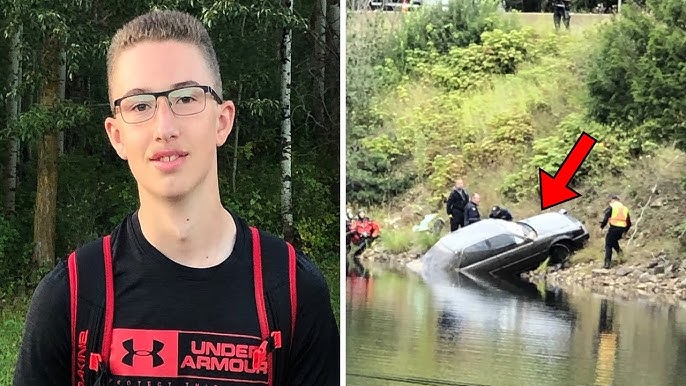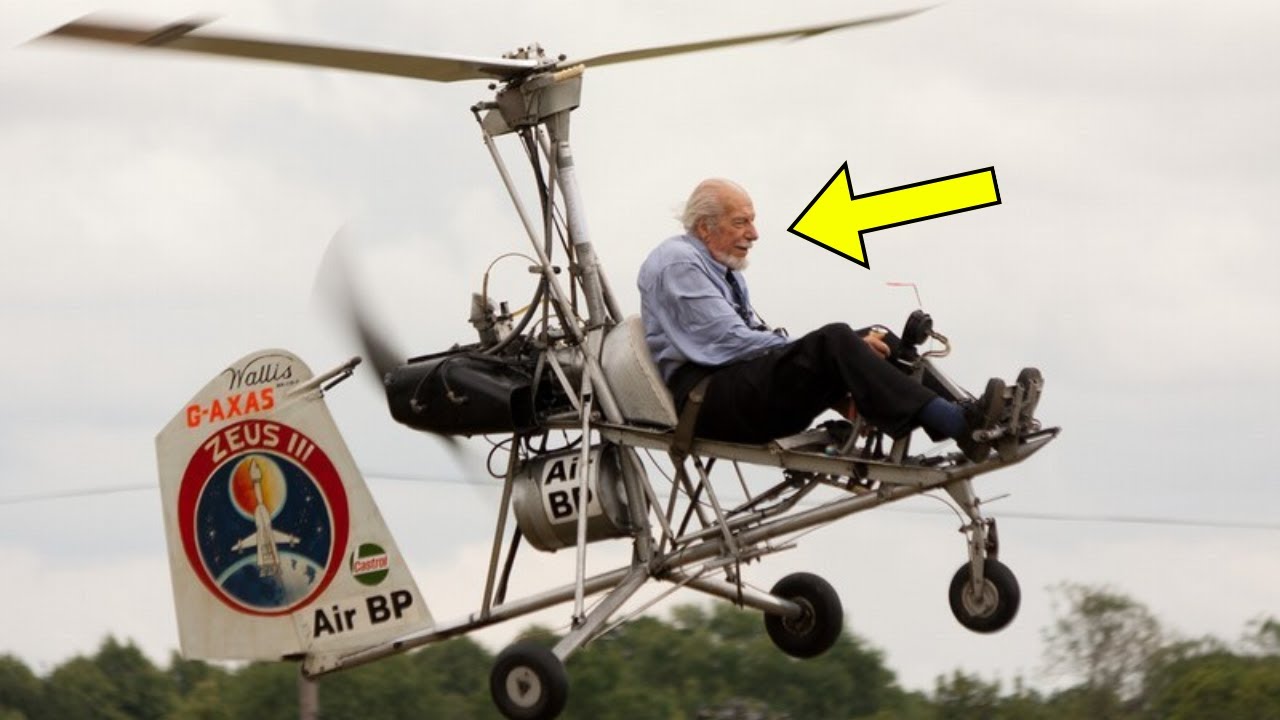Every summer, the serene waters of Griffin Lake in British Columbia shimmered beneath the golden sun, reflecting the laughter of families and the soft hum of boats gliding across its surface. The lake, framed by dense forest and rolling mountains, had long been a peaceful retreat—a place where people came to forget their troubles. But in the summer of 2019, a 13-year-old boy named Max Waranka uncovered something the lake had been hiding for nearly three decades. And once it was found, the truth rippled across time like a disturbance in otherwise still water.
Max Waranka was the kind of kid who couldn’t sit still. Raised in the great outdoors, he loved everything that involved speed, adrenaline, and curiosity. Whether it was sledding down snowy slopes or fishing in the early morning mist, Max was most alive when he was exploring. Griffin Lake had always been a second home—his family owned a set of cabins along the lake’s edge, where they spent every summer. But nothing had prepared Max for the mystery he was about to stumble into that August afternoon.
It started like any other lazy summer day. Max was chatting with a neighboring family at the lake when someone pointed out a strange glint beneath the surface of the water. It wasn’t much—just a shimmer below the gentle ripples, almost like a metallic reflection. “There’s something shiny down there,” one of the adults remarked casually. But Max’s ears perked up. He grabbed his GoPro camera, strapped it to his body, and paddled out on his board.
What began as idle curiosity quickly turned into something more. As Max hovered above the spot and peered into the depths, he could see something beneath him—something that didn’t belong.
“You could see something,” Max later told the Washington Post, “almost like a shadow. Like an imprint.”
Max dove in.
The water was cold and murky. Light barely pierced through the algae-laced depths. As he swam closer, the shape grew clearer. It wasn’t a rock or a log. It was metal—rusted, encrusted, but undeniably man-made.
It was a car.
More than that, it was an upside-down car resting at the bottom of the lake, its chassis thick with mud, its tires pointing toward the surface like a drowned insect.
At first, Max thought it might have been left behind from a recent accident. After all, the nearby highway ran along the shore, and accidents weren’t unheard of. He paddled back in and told his family what he’d found. Together, they searched the internet, and sure enough, they uncovered reports of a crash from 2009—ten years earlier—when a vehicle had careened into the lake and four people had been rescued. The family assumed that the car Max found was from that incident, simply never recovered.
Mystery solved.
Or so they thought.
The very next day, Max’s mother, Nancy, happened to strike up a conversation with an off-duty police officer visiting the resort. She mentioned Max’s discovery and the theory that the car was leftover from the 2009 crash. The officer paused and shook his head. No, he said—the car from that accident had been retrieved from the lake shortly after the incident.
Then what car was at the bottom of Griffin Lake?
Suddenly, what had been a fun summer anecdote turned into something far more serious.
On August 21, 2019, the Royal Canadian Mounted Police arrived at the lake. With Max’s help—and his now-invaluable GoPro footage—they launched an official investigation. Officers joined Max on a boat and headed back out to the spot near the highway, just ten feet from shore. But the water was murky, and visibility was poor. Even the officers had trouble seeing the submerged vehicle.
That’s when Max took a deep breath and dove back in.
Holding his GoPro in hand, he captured close-up footage of the car—its body nearly consumed by mud and aquatic vegetation, the wheels still defiantly facing upward. Inside, fish had made their home. The lake had claimed the car as its own.
But the footage was clear enough to send a chill down everyone’s spine.
This wasn’t a recent wreck.
And that meant something—or someone—was missing.
Three days later, a professional dive team was brought in. Their first goal was to identify the vehicle. Using the registration number from the license plate, they traced it back to a woman named Janet Farris, a 69-year-old grandmother who had disappeared in 1992 on her way to a wedding in Alberta.
Her case had gone cold almost immediately. Search efforts back then had yielded no results—no tire marks, no wreckage, no sightings. For 27 years, her family had waited for answers that never came.
Until Max.
Underwater, the divers confirmed the unimaginable. The car belonged to Janet. Her skeletal remains were still inside the vehicle, seatbelt still fastened, resting quietly in the place where she’d spent the final moments of her life.
“It’s almost a bit of a relief,” her son told reporters when the discovery was made public. “She’s been missing for so long, and now we have an answer.”
The lake had kept Janet’s secret for nearly three decades. No storms had stirred it loose. No investigators had found it. But a curious teenage boy with a GoPro—born 14 years after her disappearance—had.
Janet’s disappearance had haunted her family. She was a loving mother and grandmother, and her sudden vanishing had left a void no explanation could fill. Every year, they had wondered—what if? Every year, the questions returned. Was it an accident? Had she gotten lost? Had someone hurt her?
Now they knew.
As word of Max’s discovery spread, the story captured international attention. It wasn’t just that he had found a car. It was the fact that he had solved a mystery the police couldn’t. That he had answered a question a family had asked for almost 30 years. That, armed with nothing but a camera and curiosity, he had brought a woman home.
Yet for all the closure the discovery offered, it also raised questions that would never be answered. What had caused Janet’s crash? Had she swerved to avoid something? Had the road conditions betrayed her? Was there a sign that should have been there but wasn’t?
All they could say for sure was that the road had claimed her—and the lake had hidden her.
The car was recovered from the water, and the remains were respectfully handled and returned to Janet’s family. A quiet memorial was held near the lake—a final goodbye, almost 30 years too late.
And as for Max? The boy who loved hunting and fishing and GoPro adventures?
He became a local hero.
But Max, now forever tied to the lake’s secret, didn’t bask in the attention. He remained humble, repeating over and over that he was just curious. Just lucky. Just in the right place at the right time.
Yet everyone else knew the truth.
If Max hadn’t been there—if he hadn’t been paying attention, or if he hadn’t followed that glint beneath the waves—that car might have rested at the bottom of Griffin Lake forever. And Janet’s family might have gone to their graves never knowing what happened to her.
Some mysteries stay buried. But others wait patiently, silently, until someone comes along to notice the smallest shimmer beneath the surface.
A shimmer like the flash of a GoPro catching the sun just right.
Today, the waters of Griffin Lake look as peaceful as ever. Tourists come and go. Families gather for barbecues and paddle across the shallows. Most have no idea that the lake once held a secret—a 27-year-old mystery wrapped in rust and sorrow. But Max knows. His family knows. And so does Janet’s.
There’s a small plaque now at the lakeside—a quiet tribute to the woman who vanished and the boy who found her. It doesn’t shout. It doesn’t explain. It simply reads:
“In memory of Janet Farris. Discovered at last. 1992–2019.”
The lake never gave up its secret willingly.
But it gave it up just the same.
And the world, a little bit darker for Janet’s tragedy, grew a little bit brighter with the light of a boy’s courage.



